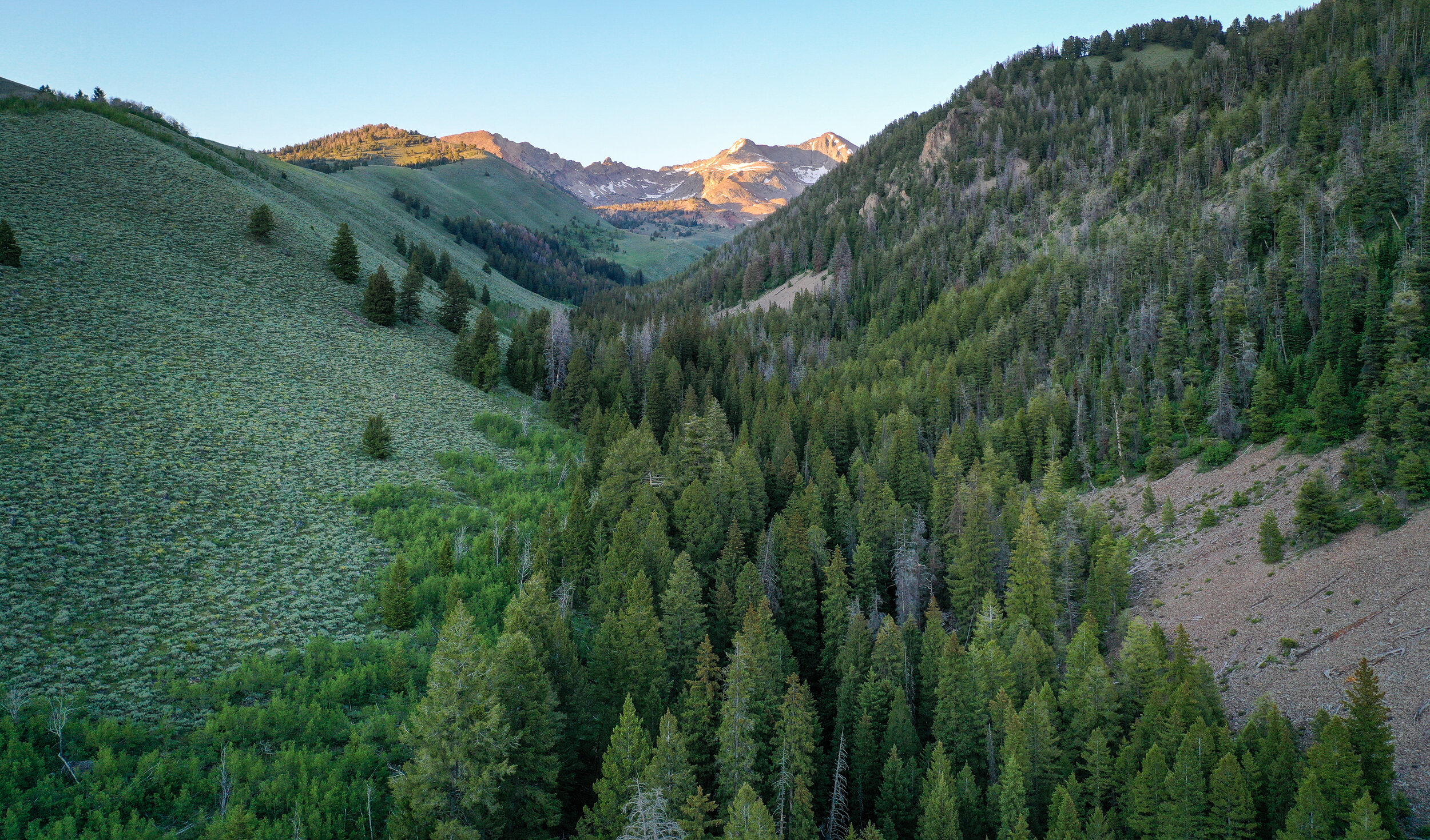

Pioneer Mountains to Craters of the Moon:
Connecting 1 million acres of ecologically diverse landscapes in south-central Idaho.
The Institute conducts its science and conservation activities in central Idaho in an approximately one million-acre landscape incorporating two distinct yet adjoining ecological regions - the Northern Rockies and the Columbia Plateau. This region of Idaho that extends from the Craters of the Moon and northern Snake River Plain to the high peaks of the Pioneer and Boulder Mountains is one of the jewels of America's natural heritage. Ranging from sagebrush steppe, grassland plains and lava flows to river, foothill and mountain ecosystems, this ecotonal landscape is rich in biodiversity and supports wide-ranging species such as pronghorn, sage grouse, mule deer, and elk, large carnivores including wolves, mountain lion, and black bears, and iconic species such as mountain goats and wolverine. The abundance and diversity of wildlife is supported by the landscape's dramatic range of elevations (from 4,000 feet to 12,000 feet), long free-flowing reaches of rivers and streams and their associated riparian habitats, rugged terrain that provides protective natural migration corridors for wildlife, and the unfragmented and undeveloped character of the land. While much of the landscape is federal land managed by the U.S. Forest Service and Bureau of Land Management, private working ranchlands provide the crucial link between summer and winter ranges.
The ecological significance and wilderness qualities of this region have long been recognized and have resulted in the establishment of over 40 Wilderness Study Areas, Inventoried Roadless Areas, and Areas of Critical Environmental Concern. To the south lies the Craters of the Moon National Monument and Preserve, expanded in 2001 from 54,000 acres to 750,000 acres. The northern portion of the region lies within and forms the southern edge of the largest complex of roadless areas in the Lower 48 states. This complex includes the Sawtooth National Recreation Area and the proposed Boulder-White Clouds Wilderness. This landscape is also linked to a large wild region that includes the Greater Yellowstone Ecosystem, the central Idaho wilderness areas, and the Northern Continental Divide Ecosystem.


